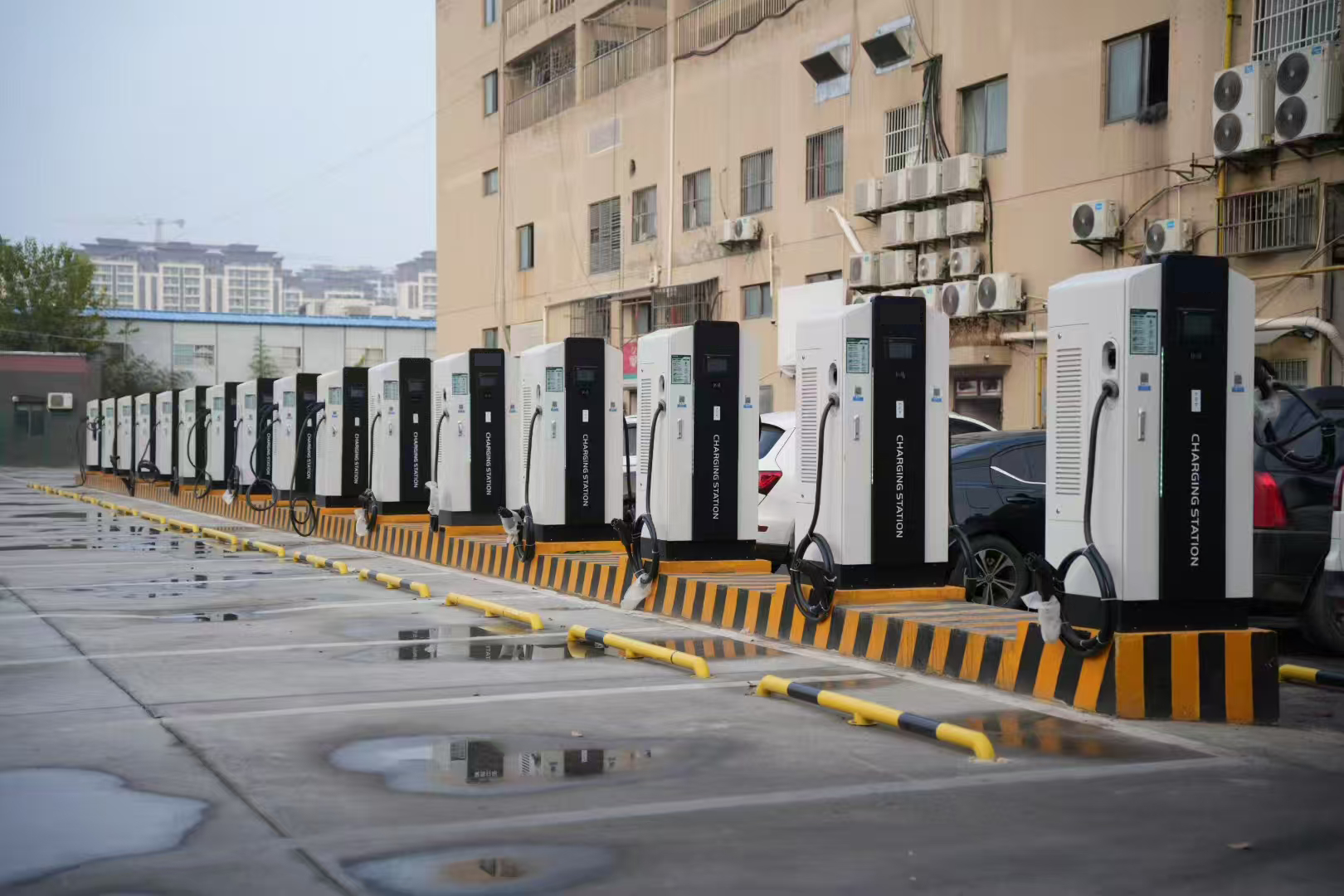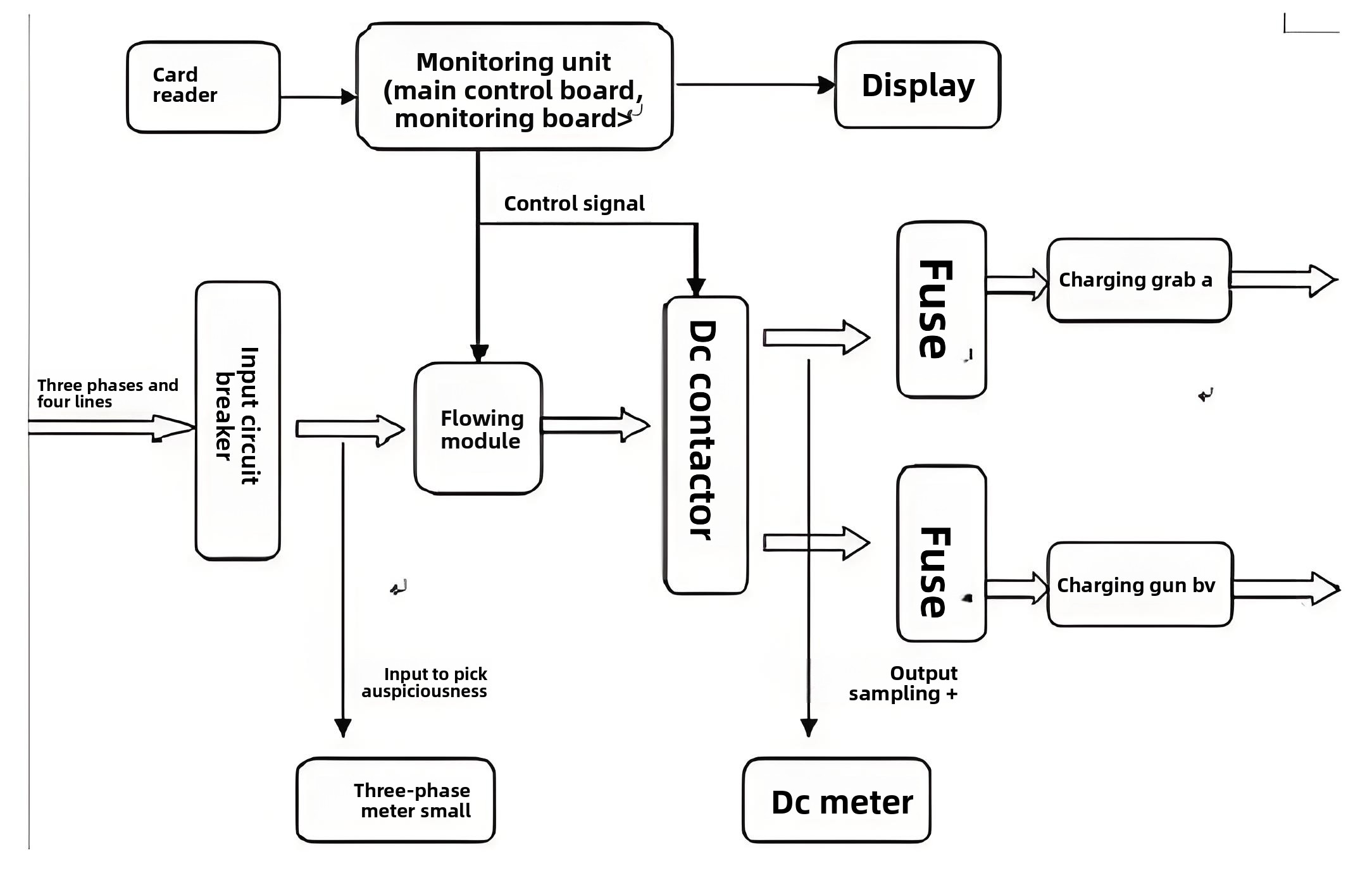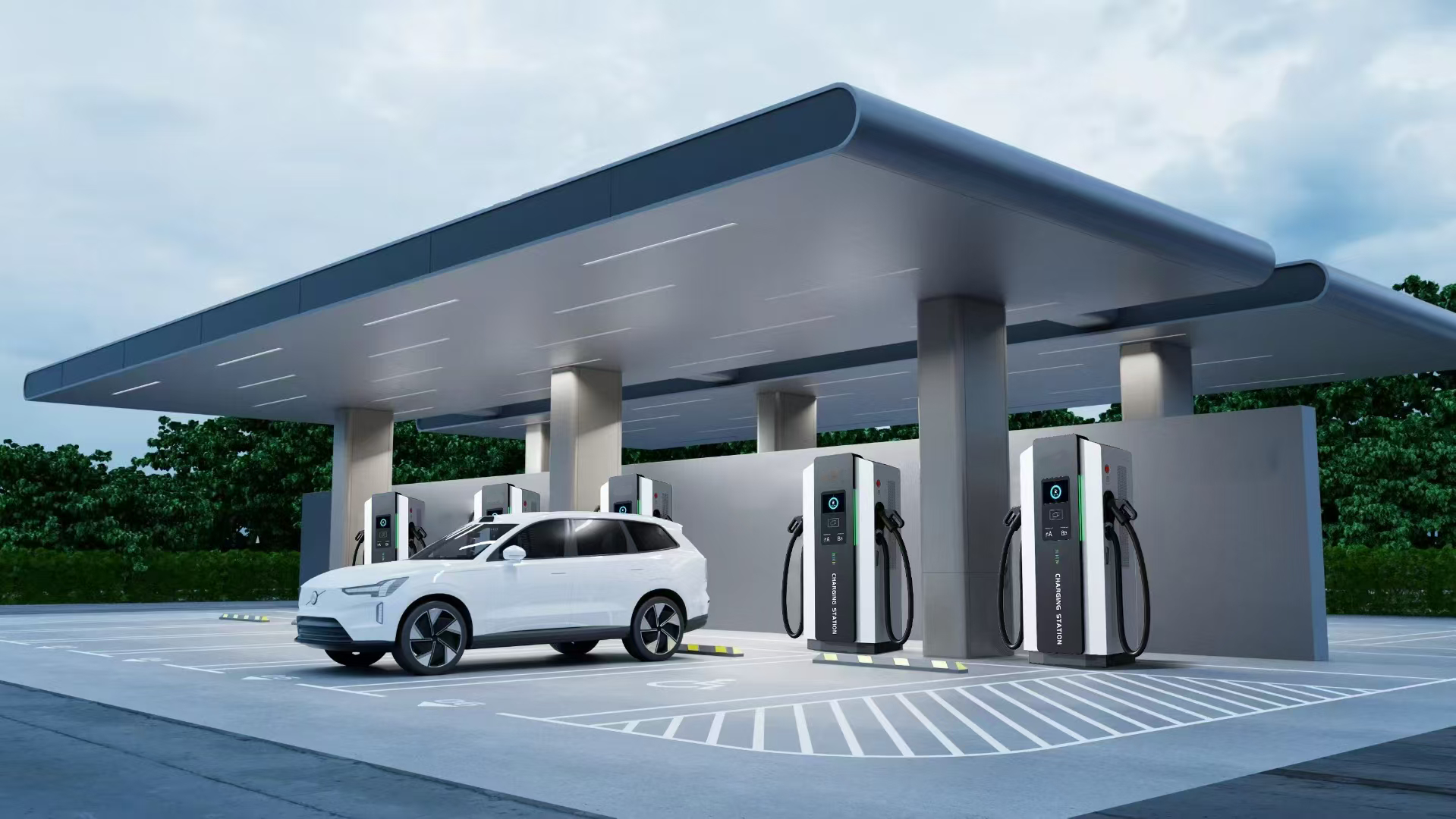1. Classification of charging piles
The AC charging pile distributes the AC power from the power grid to the charging module of the vehicle through information interaction with the vehicle, and the charging module on the vehicle controls the power to charge the power battery from AC to DC.
The AC charging gun(Type1, Type2, GB/T) for AC charging stations has 7 terminal holes, 7 holes have metal terminals to support three-phase AC electric car charging stations (380V), 7 holes only have 5 holes with metal terminals are single-phase AC ev charger (220V), AC charging guns are smaller than DC charging guns(CCS1, CCS2, GB/T, Chademo).
The DC charging pile converts the AC power of the power grid into DC power to charge the power battery of the vehicle by interacting with the vehicle with information, and controls the output power of the charging pile according to the battery manager on the vehicle.
There are 9 terminal holes on the DC charging gun for DC charging stations, and the DC charging gun is larger than the AC charging gun.
2. The basic working principle of DC charging piles
In the industry standard “NB/T 33001-2010: Technical Conditions for Non-on-board Conduction Chargers for Electric Vehicles” issued by the National Energy Administration, it is pointed out that the basic composition of DC ev charger includes: power unit, control unit, metering unit, charging interface, power supply interface and human-computer interaction interface. The power unit refers to the DC charging module, and the control unit refers to the charging pile controller. As a system integration product, in addition to the two components of “DC charging module” and “charging pile controller” constituting the technical core, the structural design is also one of the key points of the reliability design of the whole pile. “Charging pile controller” belongs to the category of embedded hardware and software technology, and “DC charging module” represents the highest achievement of power electronics technology in the field of AC/DC.
The basic process of charging is: load DC voltage at both ends of the battery, charge the battery with a constant high current, the voltage of the battery gradually and slowly rises, rise to a certain extent, the battery voltage reaches the nominal value, the SoC reaches 95% (for different batteries, different), and continues to charge the battery with constant voltage and small current. “The voltage goes up, but the battery is not full, that is, it is not full, if there is time, you can switch to a small current to enrich it.” In order to realize this charging process, the charging pile needs to have a “DC charging module” to provide DC power in terms of function; It is necessary to have a “charging pile controller” to control the “power-on, shutdown, output voltage, and output current” of the charging module; It is necessary to have a “touch screen” as the human-machine interface to issue instructions, and the controller will issue instructions such as “power on, shutdown, output voltage, output current” and other instructions to the charging module. The simplest electric vehicle charging pile understood from the electrical level only needs to have a charging module, control board and touch screen; If the commands such as power on, shutdown and output voltage] output current are made into several keyboards on the charging module, then a charging module can charge the battery.
The electrical part of a DC charger consists of a primary circuit and a secondary circuit. The input of the main loop is three-phase alternating current, which is converted into direct current acceptable by the charging module (rectifier module) after the input circuit breaker and AC smart energy meter, and then connects the fuse and ev charger gun to charge the electric vehicle. The secondary circuit consists of a electric car charging pile controller, a card reader, a display screen, a DC meter, etc. The secondary circuit also provides “start-stop” control and “emergency stop” operation; The signal light provides “standby”, “charging” and “full” status indications; As a human-computer interaction device, the display provides card swiping, charging mode setting and start-stop control operations.
The electrical principle of DC charging piles is summarized as follows:
- A single charging module is currently only 15kW, which cannot meet the power requirements, and requires multiple charging modules to work together in parallel, and needs to have a CAN bus to achieve current sharing of multiple modules;
- The input of the charging module comes from the power grid, which is a high-power power supply, involving the power grid and personal safety, especially personal safety, it is necessary to install an air switch (scientific name is “plastic shell circuit breaker”), lightning protection switch or even a leakage switch at the input end;
- The output of the charging pile is high voltage and high current, the battery is electrochemical, easy to explode, to prevent the safety of misoperation, the output must have a fuse;
- Safety issues are the highest priority, in addition to the measures at the input end, mechanical locks and electronic locks must be present, insulation testing must be present, and discharge resistance must be present;
- Whether the battery accepts charging is not determined by the charging pile, but by the brain of the battery, BMS. The BMS issues instructions to the controller of “whether to allow charging, whether to terminate charging, how much voltage and current can be accepted”, and the controller then issues it to the charging module. Therefore, it is necessary to implement CAN communication between the controller and BMS, and CAN communication between the controller and the charging module;
- The charging pile also needs to be monitored and managed, and the controller needs to be connected to the background through WiFi or 3G/4G and other network communication modules;
- The electricity bill for charging is not free, and a meter needs to be installed, and a card reader is required to realize the billing function;
- There needs to be a clear indicator light on the charging pile shell, usually three indicator lights, which indicate charging, fault and power supply respectively;
- The air duct design of DC charging piles is key. In addition to structural knowledge, air duct design requires a fan to be installed in the charging pile, although there is a fan inside each charging module.
Post time: Aug-25-2025







